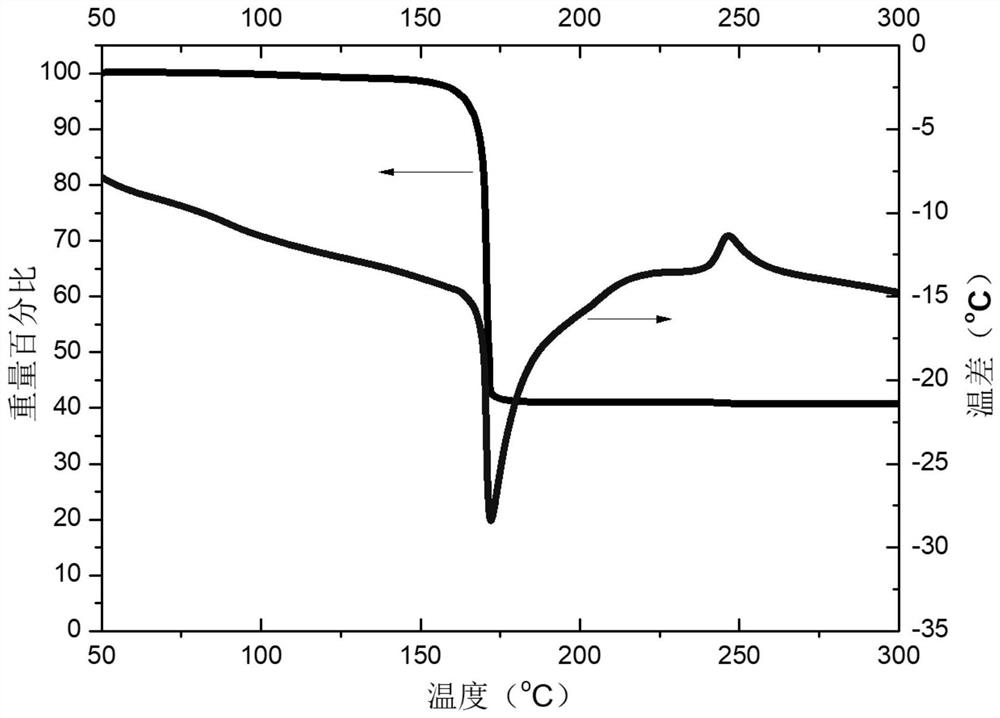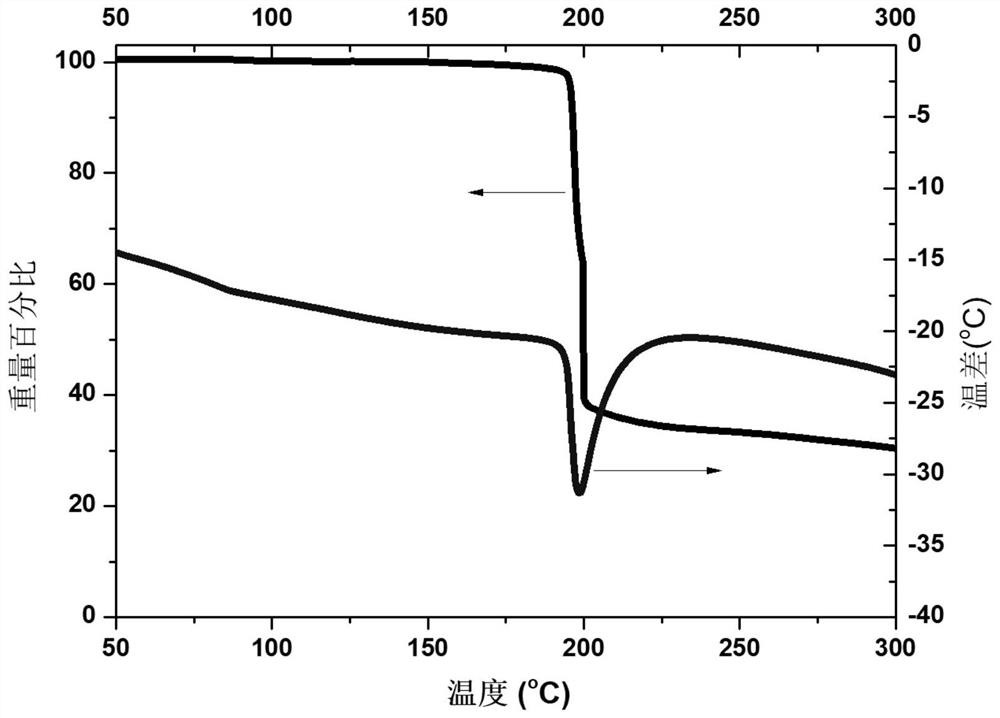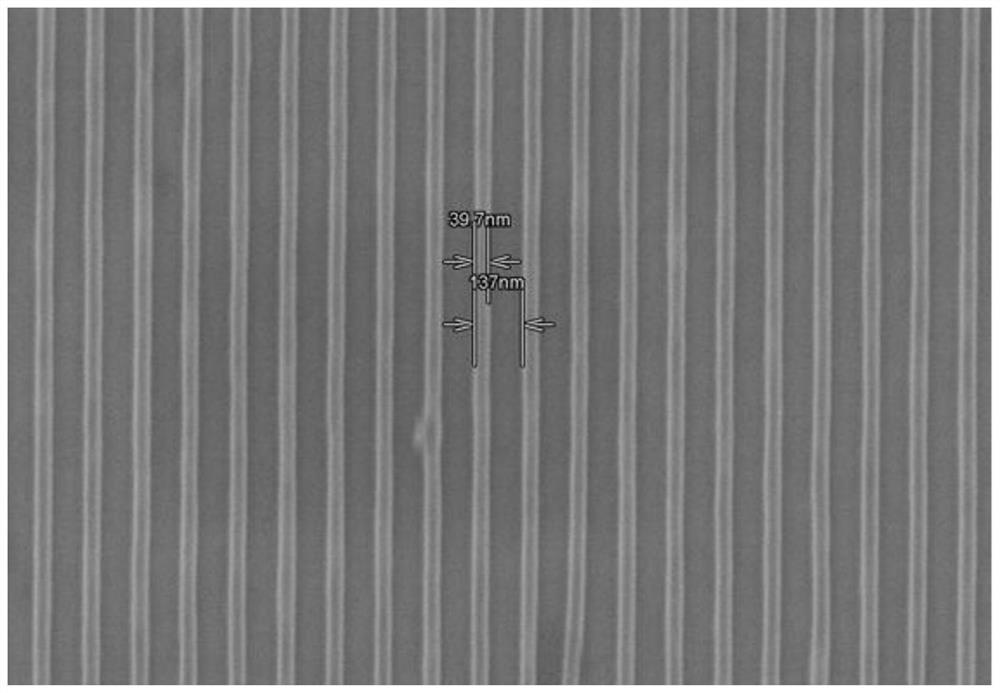Sulfur-containing unimolecule resin and photoresist composition thereof
A technology of composition and photoresist, which is applied in the field of materials, can solve the problem that the resolution of photoresist photolithography needs to be further improved
- Summary
- Abstract
- Description
- Claims
- Application Information
AI Technical Summary
Problems solved by technology
Method used
Image
Examples
Embodiment 1
[0078] Preparation of bis-(3,5-dibromo-4-hydroxyphenyl)-thione, the synthetic route is as follows:
[0079]
[0080] Specific steps: Add 2,6-dibromophenol (25.2g, 100.0mmol, 1.0eq) and thionyl chloride (5.95g, 50mmol, 0.5eq.) into a 250mL three-neck flask equipped with a condenser tube, Connect an inverted funnel with a catheter to the 30% NaOH aqueous solution to absorb the HCl produced by the reaction. In a cold water bath at 5°C, add carbon disulfide solvent (100 mL) and AlCl to the reaction system 3 (1.3g, 10mmol, 0.1eq), continue to stir and react in the cold water bath for 1 hour, then remove the cold water bath, return to room temperature and react for about 3 hours, and finally the reaction system is heated to 60°C in the oil bath for 4 hours, and the reaction solution After cooling to room temperature, a large amount of white solid was precipitated, filtered, and the filter cake was recrystallized with ethanol to obtain 23.3 g of the product with a yield of 85%. ...
Embodiment 2
[0082] Preparation of bis-(3,5-dibromo-4-methoxyphenyl)-thione, the synthetic route is as follows:
[0083]
[0084] Specific steps: Add bis-(3,5-dibromo-4-hydroxyphenyl)-thione (11.0g, 20.0mmol, 1.0eq) into a 250mL three-necked flask equipped with a condenser, 120mL of dry acetone, without Potassium carbonate water (5.5g, 40mmol, 2.0eq), methyl iodide (8.5g, 60mmol, 3.0eq.), reflux reaction under nitrogen protection for 24 hours, the reaction solution was cooled to room temperature, the solvent was removed under reduced pressure, and dichloromethane extracted with water, combined the organic layers, dried over anhydrous sodium sulfate, concentrated under reduced pressure to remove the solvent, and recrystallized in ethyl acetate to obtain 10.2 g of a white solid with a yield of 88%. 1 H NMR (400MHz, DMSO-d 6 ) δ (ppm) 3.88, (s, 6H), 7.81 (s, 4H).
Embodiment 3
[0086] To prepare 3,5-bis(3,4-dimethoxyphenyl)-4-methoxyphenyl-thione, the synthetic route is as follows:
[0087]
[0088] Concrete steps: under the protection of high-purity nitrogen, add bis-(3,5-dibromo-4-methoxyphenyl)-thione (5.8g, 10mmol, 1.0eq) in a 250mL Schleck reaction flask, Pd( PPh 3 ) 4 (578mg, 0.5mmol, 0.05eq), 3,4-dimethoxyphenylboronic acid (9.1g, 50.0mmol, 5.0eq), the system was under a nitrogen atmosphere, and finally added redistilled dioxane 100mL, water 20mL , the reaction solution was heated to reflux for 24h, cooled to room temperature, and extracted with dichloromethane / water, the organic layers were combined, dried over anhydrous sodium sulfate, concentrated under reduced pressure to remove the solvent, and recrystallized in ethyl acetate to obtain 6.7g of a white solid, the yield 83%. 1 H NMR (400MHz, CDCl 3 )δ (ppm) 7.61 (s, 4H, benzene ring), 7.10-7.07 (m, 8H, benzene ring), 6.94-6.92 (d, 4H, benzene ring), 3.92 (s, 12H, -OCH3 ),3.89(s,12H,-...
PUM
| Property | Measurement | Unit |
|---|---|---|
| Glass transition temperature | aaaaa | aaaaa |
Abstract
Description
Claims
Application Information
 Login to View More
Login to View More - R&D
- Intellectual Property
- Life Sciences
- Materials
- Tech Scout
- Unparalleled Data Quality
- Higher Quality Content
- 60% Fewer Hallucinations
Browse by: Latest US Patents, China's latest patents, Technical Efficacy Thesaurus, Application Domain, Technology Topic, Popular Technical Reports.
© 2025 PatSnap. All rights reserved.Legal|Privacy policy|Modern Slavery Act Transparency Statement|Sitemap|About US| Contact US: help@patsnap.com



